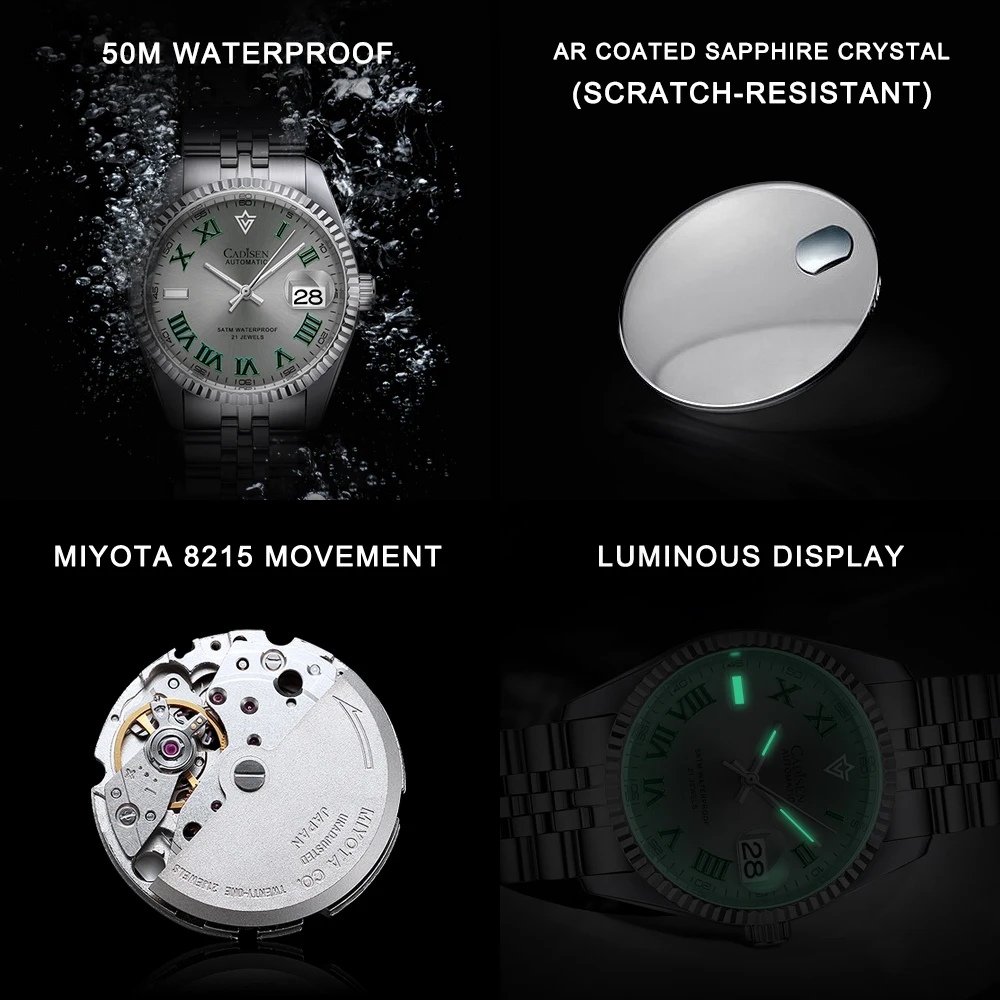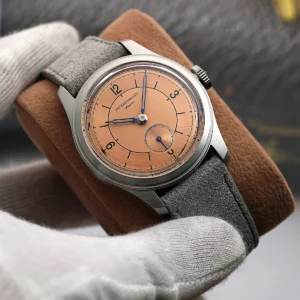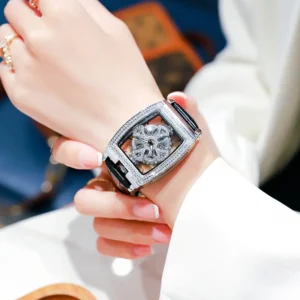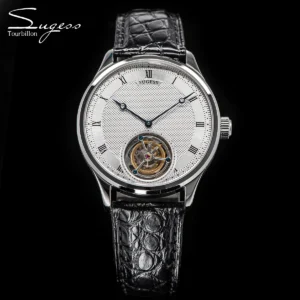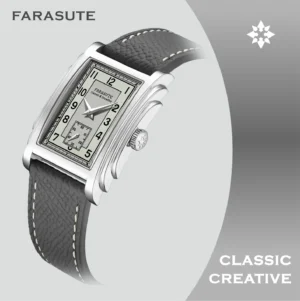Introduction: The Enduring Allure of Chronographs
Chronographs stand as remarkable feats of engineering—watches that not only tell time but measure it with precision. Unlike ordinary timepieces, chronographs feature an integrated stopwatch function, allowing wearers to time events while maintaining regular timekeeping. Despite the ubiquity of digital timing devices, mechanical chronographs continue to captivate collectors worldwide.
The appeal of these intricate timepieces extends far beyond their practical utility:
- They represent the perfect marriage of form and function, combining technical sophistication with artistic expression
- Each chronograph tells a story of horological innovation spanning over two centuries
- The mechanical complexity hidden beneath the dial offers collectors an object of both intellectual fascination and aesthetic beauty
This comprehensive guide aims to demystify chronograph features and mechanisms for collectors at any stage. We’ll explore everything from basic components to advanced complications, helping you develop the knowledge to evaluate, appreciate, and build a meaningful collection. The journey into understanding these precision instruments begins with the fundamental components that have defined chronographs throughout the history of precision timing instruments.
I. Understanding Chronograph Fundamentals: Function and Origins
A chronograph is more than just a watch with extra dials—it’s a sophisticated instrument combining regular timekeeping with stopwatch capabilities. The term “chronograph” derives from Greek roots: “chronos” (time) and “graph” (to write), originally referring to devices that literally marked elapsed time on paper with ink dots.
The chronograph’s rich history spans more than two centuries:
- Early 1800s: Nicolas Rieussec creates the first recognized “time writer” for King Louis XVIII to time horse races
- Mid-1800s: The discovery that Louis Moinet had created a high-frequency timekeeper for astronomical observations
- Late 1800s: Chronograph mechanisms miniaturized and refined for pocket watches
- Early 1900s: Transition to wrist-worn chronographs for military and aviation applications
- Mid-1900s: Introduction of waterproof chronographs for diving and sports timing
- Late 1900s: Development of automatic chronograph movements eliminating manual winding
It’s important to note that while all chronographs feature stopwatch functionality, not all are chronometers. The latter term specifically refers to watches that have passed rigorous accuracy certification tests. These distinct concepts often cause confusion among new collectors.
The development of chronographs has always been driven by specific real-world needs—from timing races and military operations to calculating speed, distance, and even patient heartbeats in medical settings. This utilitarian heritage continues to influence modern designs, as explored in greater detail in our article on the enduring legacy of chronograph complications.
II. Essential Components and Architecture of Collectible Chronographs
The visual language of chronographs revolves around several key external components that both define their appearance and functionality. Understanding these elements is crucial for any serious collector.
Pushers: The Chronograph’s Control Center
Chronograph pushers come in several configurations that affect both aesthetics and functionality:
- Monopusher: A single button controls starting, stopping, and resetting—elegant but functionally limited
- Dual-pusher: The classic arrangement with separate buttons for start/stop and reset functions
- Triple-pusher: Adds a dedicated flyback or split-seconds function button for advanced timing operations
Registers: The Information Display
The sub-dials (registers) typically follow established patterns:
- Bi-Compax: Two-register layout, usually displaying running seconds and a chronograph minute counter
- Tri-Compax: Three-register design showing running seconds, chronograph minutes, and chronograph hours
- Quadruple register layouts: Include additional functions like date, power reserve, or specialized timing displays
Scales: The Calculation Tools
The various scales printed on chronograph dials or bezels transform time measurements into practical data:
- Tachymeter: Calculates speed over a fixed distance
- Telemeter: Determines distance based on the speed of sound
- Pulsometer: Facilitates heart rate measurements
- Decimal: Divides minutes into hundredths for industrial timing
These components work together as an integrated system, allowing the chronograph to perform complex timing operations. The placement, proportion, and design of these elements create the distinctive visual signature of different chronograph models and brands.
For collectors, understanding the relationship between these external features and the inner workings of chronograph watches provides essential context for appreciating their value and significance.
III. Movement Mechanics: The Core of Chronograph Value
What truly distinguishes exceptional chronographs lies beneath the dial—the movement mechanics that determine performance, durability, and ultimately, collector value.
Manual vs. Automatic Chronograph Movements
| Feature | Manual Chronographs | Automatic Chronographs |
|---|---|---|
| Winding method | Hand-wound via crown | Self-winding via rotor |
| Case thickness | Generally thinner | Typically thicker |
| Visual appeal | Unobstructed movement view | Rotor partially blocks view |
| User engagement | Daily winding ritual | “Set and forget” convenience |
| Collector appeal | Traditional, purist approach | Practical, technological approach |
| Power reserve | Typically 40-48 hours | Usually 38-70 hours |
Movement Construction: Integrated vs. Modular
Integrated chronograph movements feature timing mechanisms built as an integral part of the base movement, resulting in:
– More harmonious component interaction
– Better power transmission efficiency
– More appealing aesthetics for purists
– Greater prestige and typically higher value
Modular chronographs feature a separate chronograph mechanism attached to a base movement, offering:
– More cost-effective manufacturing
– Easier servicing of separate components
– Greater thickness due to stacked design
– Generally lower collector value despite sometimes equal performance
Activation Mechanisms: Column Wheel vs. Cam-Actuated
Column wheel chronographs are distinguished by a pillar-like component that controls functions, providing:
– Smoother pusher operation with distinct clicks
– More precise engagement of chronograph wheels
– Traditional prestige and typically higher cost
– More labor-intensive production process
Cam-actuated mechanisms use stamped metal components for the same functions, resulting in:
– Slightly firmer pusher resistance
– Highly reliable but less refined operation
– More economical manufacturing process
– Greater resilience to rough handling
The type of movement directly impacts not only how a chronograph operates but also its long-term serviceability. Vintage chronographs with obsolete parts present different challenges than modern pieces with more readily available components. Understanding these technical distinctions provides essential context when considering how chronographs fit within the broader timeline of specialized watch innovations.
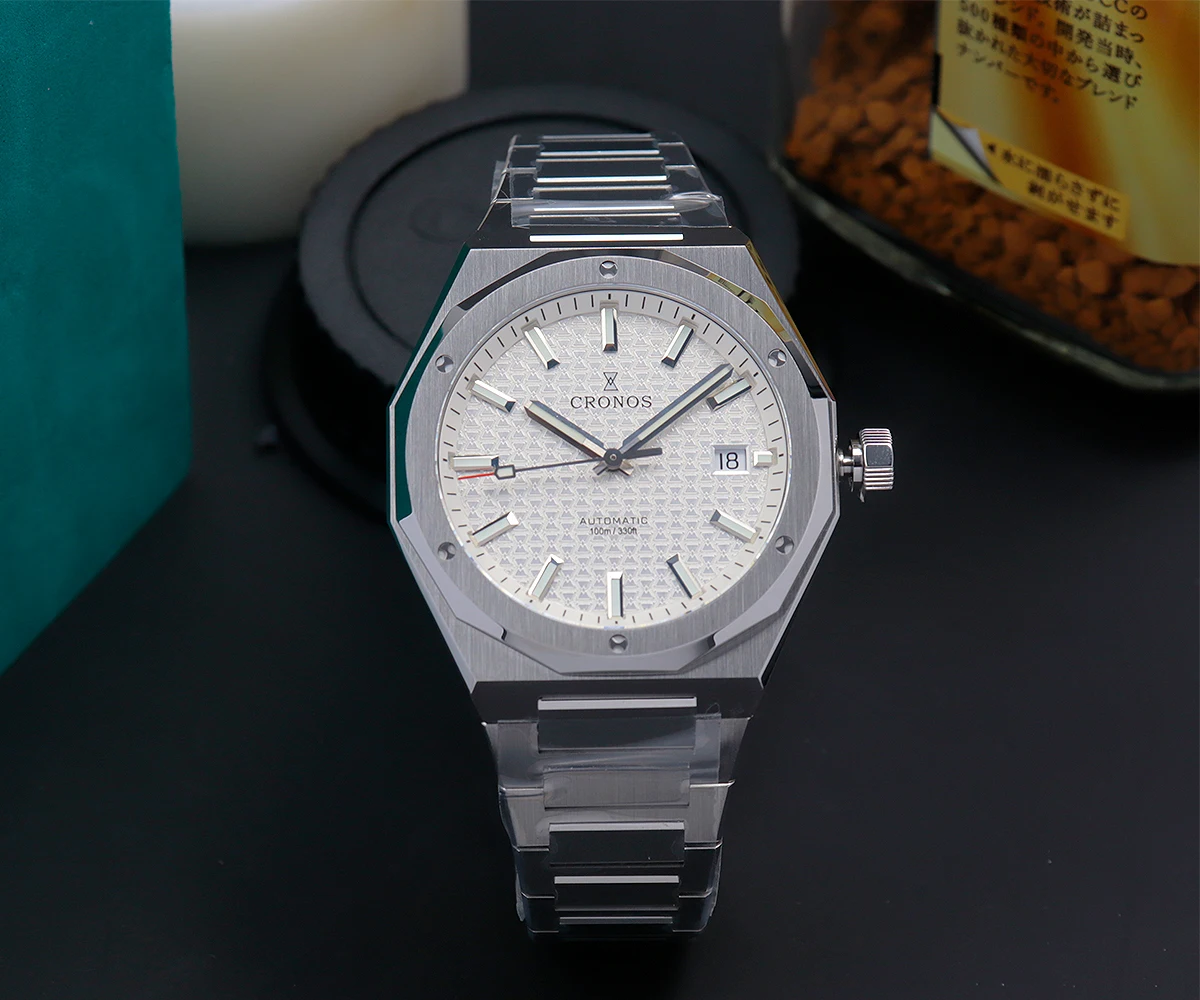
IV. Advanced Chronograph Complications: Elevating Collectibility
Beyond basic chronograph functions lie sophisticated complications that represent the pinnacle of watchmaking skill and significantly enhance collector appeal.
The Flyback Chronograph
This complication allows the chronograph to be reset and immediately restarted with a single pusher action:
- Originally developed for pilots who needed to time consecutive legs of navigation
- Eliminates the traditional stop-reset-restart sequence
- Requires a specialized mechanism to disengage and re-engage the chronograph wheels instantly
- Significantly increases movement complexity with additional levers and springs
The Rattrapante (Split-Seconds) Chronograph
Often considered the queen of chronograph complications, the rattrapante features:
- Two superimposed central chronograph seconds hands
- Ability to time intermediate events without interrupting the main timing operation
- Extremely complex mechanism with additional column wheels, clutches, and isolating systems
- Substantial manufacturing challenges that limit production and elevate prices
The Monopusher Chronograph Revisited
Beyond the simplified control mentioned earlier, monopusher designs offer:
- Elegant case profiles without additional protrusions
- Technical challenges in creating sequential functions through a single button
- Historical significance as the original chronograph configuration
- Clean aesthetics highly prized by collectors seeking understated sophistication
Chronograph Combinations
When chronographs merge with other complications, the technical achievement reaches extraordinary levels:
- Chronograph-calendar combinations require intricate interactions between timing and date systems
- Moonphase chronographs add astronomical functions to timing capabilities
- Minute repeaters combined with chronographs represent some of horology’s most complex achievements
- Each additional function exponentially increases movement complexity and potential service challenges
The presence of these advanced features dramatically impacts market value, with certain combinations commanding premium prices due to their rarity and technical sophistication. For collectors, recognizing these complications provides crucial context for understanding why certain pieces achieve legendary status.
For a deeper exploration of these sophisticated mechanisms, our article on understanding chronograph movement watches provides detailed technical insights.
V. Decoding Specialized Scales: Practical Applications Beyond Timekeeping
Chronographs transform from simple timing tools into specialized calculators through various scales printed on their dials or bezels. Understanding these scales reveals the practical applications that drove chronograph evolution.
Tachymeter Scales
The most common chronograph scale calculates speed based on time elapsed over a fixed distance:
- Typically calibrated for 1 kilometer or 1 mile
- Start the chronograph at the beginning point, stop at the end point
- Read the value on the scale where the chronograph hand points
- Example: Covering 1 km in 30 seconds indicates 120 km/h
Telemeter Scales
Designed to measure distance based on the speed difference between light and sound:
- Start the chronograph when seeing an event (lightning, artillery flash)
- Stop when hearing the associated sound
- Read the distance in kilometers or miles on the scale
- Originally developed for military artillery spotting and range finding
Pulsometer Scales
Created specifically for medical practitioners to calculate heart rate efficiently:
- Typically calibrated for 15 or 30 heartbeats
- Start the chronograph and count the specified number of pulses
- Stop the chronograph and read the heart rate in beats per minute
- Eliminates mental calculation during patient assessment
Decimal Scales
Unlike standard chronographs that divide minutes into 60 seconds, decimal chronographs use:
- 100-unit divisions of the minute for industrial and scientific timing
- Direct reading of decimal fractions of a minute
- Easier calculation for time-and-motion studies and productivity assessment
- Specialized applications in manufacturing and research settings
These scales transform chronographs into profession-specific tools, explaining why certain designs became associated with particular fields. Pilots favored telemeter and tachymeter scales, doctors sought pulsometers, and industrial engineers preferred decimal layouts.
For a practical demonstration of how these scales function in professional settings, explore our guide on the comprehensive guide to chronograph use in aviation.
VI. Brand Signatures and Iconic Chronograph Models
Different manufacturers have developed distinctive approaches to chronograph design that define their brand identity and create lasting horological legacies.
Distinctive Brand Signatures
Major watch houses have established recognizable chronograph traits:
- Distinctive pusher shapes and arrangements
- Unique register layouts and proportions
- Proprietary movement architectures
- Specialized scale implementations
- Characteristic hand designs and dial treatments
Game-Changing Chronographs
Certain models have fundamentally altered the chronograph landscape through:
- Groundbreaking water resistance capabilities
- Innovative case materials and construction
- Revolutionary movement designs
- Space and aviation applications
- Racing and motorsport associations
Brand-Specific Innovations
Technical advancements that define manufacturer identity include:
- Patented automatic winding systems
- Unique chronograph coupling mechanisms
- Innovative reset systems
- Proprietary materials in movement components
- Special shock-protection designs
The “Grail Watch” Phenomenon
What elevates certain chronographs to legendary status typically involves:
- Limited production numbers
- Association with significant historical events
- Technical innovations that changed watchmaking
- Celebrity ownership or endorsement
- Exceptional finishing and craftsmanship
Understanding these brand-specific approaches helps collectors recognize the distinctive design language that makes each manufacturer’s chronographs immediately identifiable. These signature elements reflect both aesthetic preferences and technical philosophies, creating the diversity that makes chronograph collecting so engaging.
For additional perspective on how chronographs have evolved alongside other specialized timepieces, our article on the evolution of specialized watch technology provides valuable context.
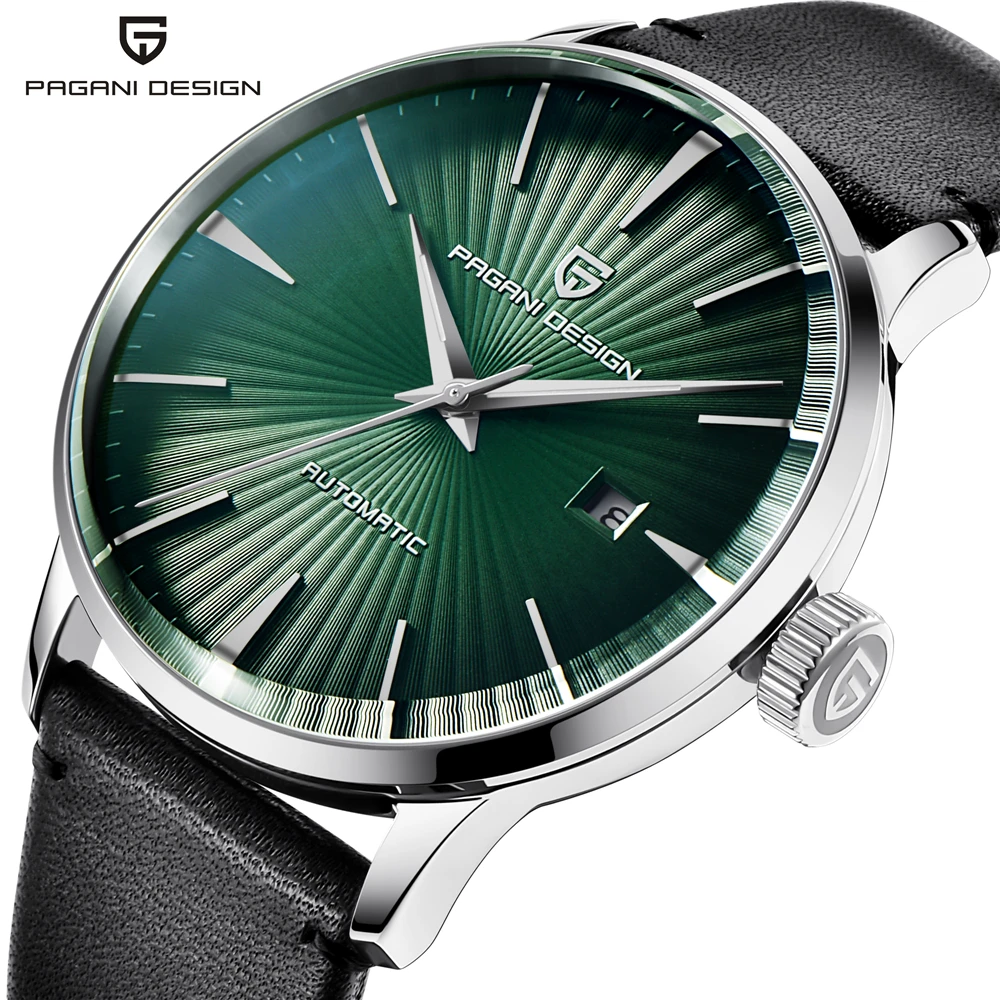
VII. Evaluating Chronographs: The Collector’s Critical Eye
Developing a discerning eye for chronograph quality and authenticity requires attention to specific details that impact both value and collectibility.
Authentication Essentials
When evaluating a chronograph’s authenticity, focus on:
- Correct font styles and printing techniques for the era
- Appropriate luminous material (radium, tritium, or modern Super-LumiNova)
- Period-correct hands and register design
- Proper serial number and caliber number placement
- Authentic movement finishing techniques
- Correct case material and hallmarks
- Appropriate caseback engravings and format
The Refinishing Question
Chronograph cases and dials present special considerations:
- Original unpolished cases typically command significant premiums
- Over-polishing can eliminate crucial case lines and chamfers
- Refinished dials dramatically impact value, especially in vintage pieces
- Water damage leaves characteristic staining patterns on registers
- Replacement hands should match in style, size, and aging
Condition Assessment Priorities
Prioritize these elements when evaluating chronograph condition:
- Pusher functionality and feel
- Chronograph hand alignment and reset action
- Register hand synchronization
- Acceptable power reserve when running
- Water resistance integrity (if applicable)
- Bezel rotation and alignment
- Scale legibility and preservation
- Crown threading and winding smoothness
The Patina Perspective
Vintage chronographs present special considerations regarding aging:
- Consistent dial patina is typically valued, while spotting may reduce appeal
- Register discoloration should ideally match the main dial aging
- Luminous material should show consistent aging across all applications
- Hand oxidation should progress similarly across all hands
- Case patina should appear natural rather than artificially induced
For collectors looking to acquire quality timepieces that showcase excellent chronograph features, our automatic chronograph watches collection offers carefully selected examples that demonstrate many of these quality indicators.
Automatic Chronograph Watches, Chronograph Pilot Watches
Price range: $233.36 through $237.58 Select options This product has multiple variants. The options may be chosen on the product pageAutomatic Chronograph Watches, Classic Style Dive Watches
$3,053.06 Select options This product has multiple variants. The options may be chosen on the product pageClassic Manual Wind Watches, Manual Wind Dress Watches
Price range: $425.50 through $462.50 Select options This product has multiple variants. The options may be chosen on the product page- $104.12 Select options This product has multiple variants. The options may be chosen on the product page
Automatic Skeleton Watches, Classic Manual Wind Watches, Manual Wind Dress Watches, Mechanical Skeleton Watches
$1,944.80 Select options This product has multiple variants. The options may be chosen on the product pageClassic Manual Wind Watches, Manual Wind Dress Watches, Square & Rectangular Automatic Watches
$884.95 Select options This product has multiple variants. The options may be chosen on the product page
VIII. Building and Maintaining a Focused Chronograph Collection
Creating a meaningful chronograph collection requires strategic thinking about both acquisition and preservation.
Thematic Collection Approaches
Consider organizing your collection around:
- Evolutionary milestones in chronograph development
- Specific complications (flyback, rattrapante, etc.)
- Professional applications (aviation, medicine, racing)
- Movement types or specific calibers
- Single manufacturer focus or comparative collection
Specialized Servicing Considerations
Chronograph maintenance presents unique challenges:
- Servicing intervals typically shorter than time-only watches (3-5 years)
- Finding technicians specifically experienced with your chronograph type
- Balancing originality preservation with functional reliability
- Sourcing appropriate parts for vintage models
- Understanding reasonable service costs for complex mechanisms
Storage and Handling Best Practices
Proper chronograph care requires:
- Avoiding magnetization that can affect chronograph function
- Proper winding procedures specific to your movement type
- Understanding water resistance limitations
- Using watch winders appropriately for automatic chronographs
- Protecting pushers from dust and moisture infiltration
For collectors interested in specialized chronograph categories, our chronograph pilot watches collection offers excellent examples of purpose-built timing instruments that represent key developments in chronograph evolution.
IX. Are Chronographs Still Relevant in the Digital Age?
Despite the ubiquity of digital timing devices, mechanical chronographs continue to thrive. This enduring appeal stems from several factors that transcend mere timekeeping utility.
Mechanical chronographs represent human ingenuity in its purest form—the ability to measure fractions of time using only springs, gears, and levers. This tangible connection to traditional craftsmanship provides a counterbalance to our increasingly digital world. The sensory experience of operating a mechanical chronograph—the tactile feedback of the pushers, the visual dance of the hands—creates an emotional connection impossible to replicate digitally.
Today’s watchmakers continue pushing chronograph evolution forward, incorporating new materials like silicon and carbon composites while preserving traditional mechanisms. These innovations focus not on replacing the fundamental architecture but on enhancing durability, accuracy, and reliability.
The chronograph’s persistence also reflects our appreciation for objects that elegantly solve problems. In a world where most devices become obsolete within years or even months, a well-crafted chronograph represents something more permanent—a sophisticated machine that can mark our moments for generations when maintained properly.
This perspective on mechanical permanence extends to other traditional watchmaking approaches, as demonstrated in our collection of manual-wind watches that celebrate similar horological principles.
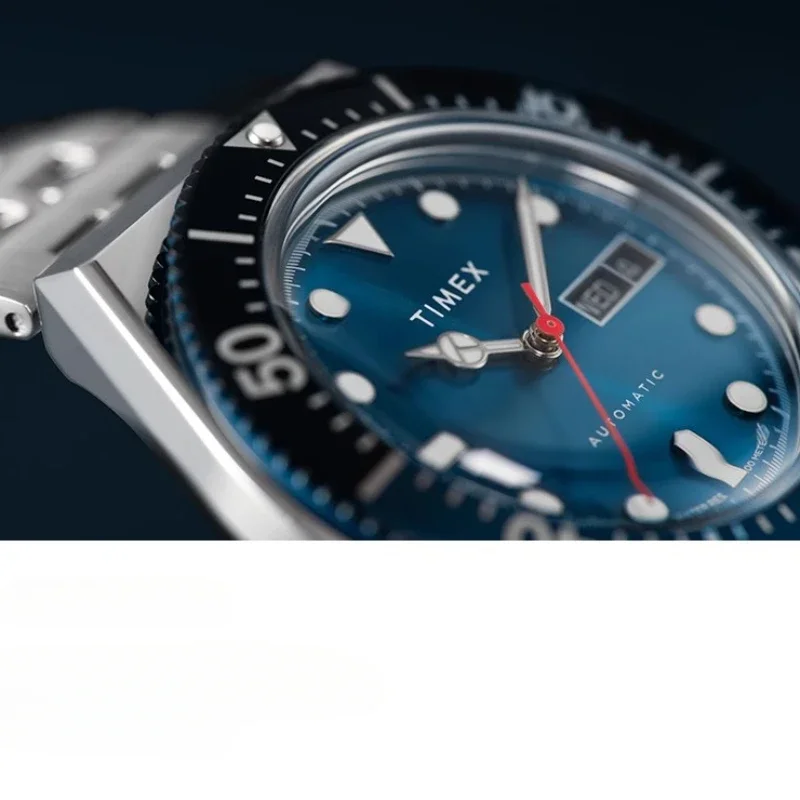
Chronograph Terminology: Essential Collector’s Glossary
Bi-Compax: A chronograph layout featuring two sub-registers, typically for running seconds and minute counting.
Column Wheel: A component resembling a castle turret that controls chronograph functions, generally associated with higher-quality movements.
Coulisse-Lever: A cam-actuated chronograph system using shaped levers instead of a column wheel.
Flyback: A function allowing the chronograph to be reset and restarted with a single pusher action.
Foudroyante: A “lightning” seconds hand that makes one revolution per second, typically divided into 5-8 steps.
Horizontal Clutch: A chronograph coupling system where wheels engage laterally.
Monopusher: A chronograph controlled entirely through a single button.
Rattrapante: A split-seconds chronograph capable of timing intermediate events.
Register: A sub-dial displaying chronograph or other functions.
Tri-Compax: A three-register chronograph layout, typically showing running seconds, chronograph minutes, and chronograph hours.
Valjoux 7750: An influential automatic chronograph movement known for its robustness and wide adoption.
Vertical Clutch: A chronograph coupling system where wheels engage vertically, typically producing smoother operation.
For those interested in exploring traditional watchmaking techniques that underpin fine chronographs, our collection of classic manual-wind watches demonstrates many of the finishing and design principles that define exceptional timepieces.
The journey into chronograph collecting offers endless fascination, combining technical appreciation with historical understanding. Each piece tells a story of both horological evolution and human ingenuity, making chronographs among the most rewarding categories for the discerning watch enthusiast.

